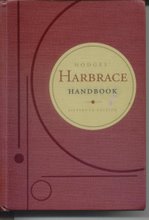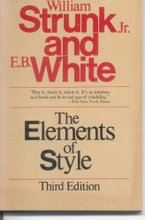My colleague Mike Harris introduced me to an early 20th Century pedagogue who belongs in our Grammar Pantheon along with Strunk & White, Hodges, Royster, Cushwa, Ruge, et al.
Jacob C. Tressler published his thesis on "The Efficiency of Student Correction of Compositions" in 1912, based on methods developed at Boys' High School in Brooklyn. By 1936 he had a national reputation, as head of the English Department at Richmond Hill High School in New York and as the author of English In Action, Courses One through Five, which had sold more than a million copies, were used all over the country, and are still available on amazon.com for as little as $2 plus shipping.
"He pioneered a new emphasis in English textbooks," writes Henry I. Christ in "J.C. Tressler--A Brief Memoir, "--on making young people proficient in the actual use of English, not on trying to to create inept grammarians. He devised a dual organization of textbooks, with composition activities in one section and a reference handbook [the rules of grammar] in the second. . . .
"Tressler was an imposing presence. Physically, he towered over most people. When he entered a room, there were whispers of, 'There's Dr. Tressler.' He had a reserved personality, but there were depths of warmth and compassion known best to his closest friends and associates."
From Courses Three (1935) and Four (1940), it is plain that Tressler saw English teaching as intertwined with creating generally well-rounded people. The "composition activities" include public speaking (with a photo of coach Fritz Crisler talking to the Princeton football squad), conducting meetings, engaging in social conversation, putting out the school paper and yearbook, understanding "Personality and Human Relations" ("Skill helps build a self-confident personality," captions a photo of a lad using some sort of machine-tool), and many other tidbits.
Tressler's wonderful chapter on poetry explains meter wonderfully:
"When the rhythm is regular and conforms to a definite pattern, we say the line has meter. Each metrical line, or verse, is composed of feet, groups recurring accented and unaccented syllables.
"The commonly used feet are --
iambic . . . . . . u ' . . . . . . (ta tum') . . . . . . Marie'
anapestic . . . . . . u u ' . . . . . . (ta ta tum') . . . . . . to the brave'
trochaic . . . . . . ' u . . . . . . (tum' ta) . . . . . . Ma'ry
dactylic . . . . . . ' u u . . . . . . (tum' ta ta) . . . . . . Ma'rion
Dactyl is from the Greek word meaning finger. A finger has three bones, one longer than either of the others.
A verse is made up of one or more feet, and is named according to the type and number of feet. A verse having five iambic feet is called iambic pentameter.
u . ' . . u . . ' . . . . . . u . ' . . . . u . ' . . . . . . u . '
They al so serve who on ly stand and wait."
Thursday, April 3, 2008
Subscribe to:
Post Comments (Atom)







No comments:
Post a Comment